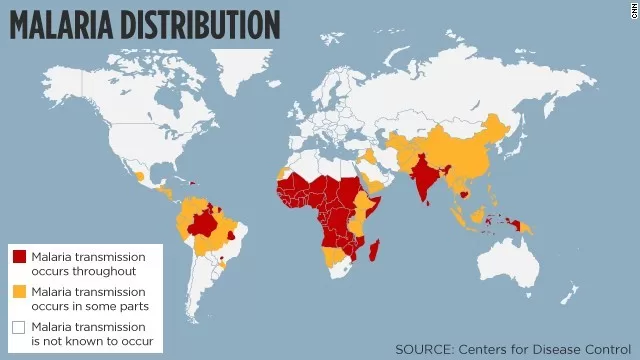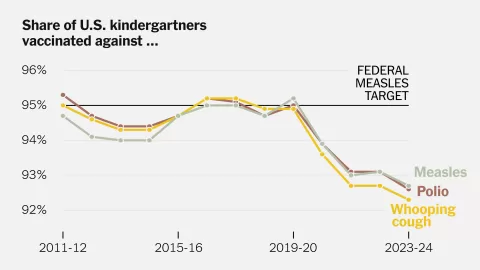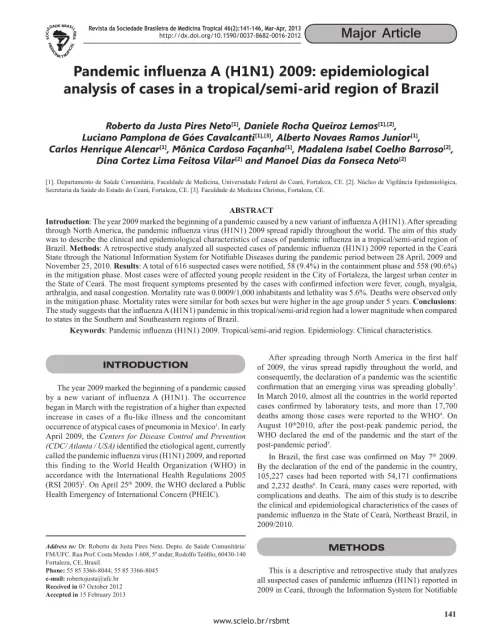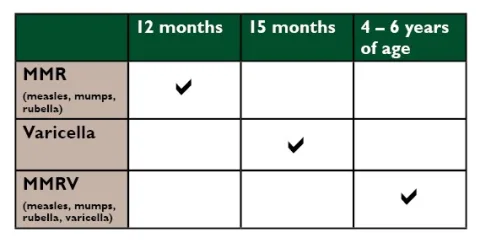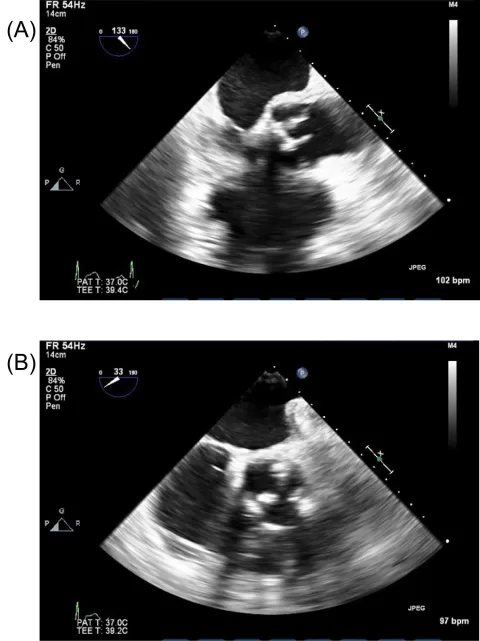The recent malaria outbreak DRC has raised significant concern as health officials grapple with the complexities of a febrile illness affecting the region. According to the latest World Health Organization (WHO) outbreak update, an alarming 62% of samples from patients in the Panzi health zone tested positive for falciparum malaria, alongside common respiratory viruses. This dual threat of malaria and acute respiratory infections has overwhelmed local healthcare resources, particularly in a context of rising acute malnutrition. The WHO’s investigation revealed 891 reported cases with 48 fatalities, highlighting the urgent need for effective response strategies. As the situation continues to develop, the focus remains on enhancing surveillance and control measures to mitigate the impact of this public health crisis.
The ongoing health crisis in the Democratic Republic of the Congo (DRC) is marked by a significant spike in febrile illnesses, primarily driven by a malaria outbreak. This situation is complicated by the presence of various respiratory pathogens, as health authorities strive to manage the dual burden of malaria and acute respiratory infections. Recent laboratory findings have identified a range of common respiratory viruses, further complicating the public health response. With a growing number of cases reported, the need for comprehensive strategies is more pressing than ever. Efforts are underway to bolster disease surveillance and implement effective treatment protocols to safeguard the health of the affected populations.
Understanding the Malaria Outbreak in DRC
The recent malaria outbreak in the Democratic Republic of the Congo (DRC) has raised significant concerns among health officials and the World Health Organization (WHO). Lab findings from a febrile illness investigation in the Panzi health zone have confirmed that falciparum malaria is prevalent among the affected population. Out of 430 samples collected, nearly two-thirds tested positive for malaria, underscoring the critical nature of the situation. This outbreak is particularly troubling given the existing public health challenges in the region, including acute malnutrition and other febrile illnesses that complicate treatment and increase mortality rates.
As the WHO continues to monitor the outbreak, they emphasize the need for improved surveillance and case detection. The increase in malaria cases appears to correlate with the rainy season, which often exacerbates mosquito breeding conditions. Moreover, the presence of common respiratory viruses complicates the clinical landscape, as healthcare providers must contend with multiple overlapping illnesses. Effective response strategies that include malaria control measures and addressing acute respiratory infections are essential to mitigate the outbreak’s impact on the local population.
The Role of Common Respiratory Viruses in the Outbreak
In addition to malaria, the outbreak investigation in DRC revealed a significant presence of common respiratory viruses among patients. Out of the 89 samples tested for respiratory pathogens, 64 were positive for various viruses, including seasonal flu, rhinoviruses, and coronaviruses. This dual incidence of respiratory infections and malaria presents unique challenges for health authorities, as patients may exhibit symptoms common to both illnesses. The overlap in clinical presentations necessitates comprehensive testing and accurate diagnosis to ensure appropriate treatment.
The World Health Organization’s outbreak update indicates that acute respiratory infections have been complicated by the presence of malaria, which can lead to severe illness and increased mortality. The co-infection scenario has implications for treatment protocols, as healthcare practitioners must be vigilant in managing both conditions simultaneously. This complexity highlights the importance of public health education to inform communities about recognizing symptoms of both febrile illness and respiratory infections, thereby promoting early medical intervention.
Impact of Acute Malnutrition on Disease Severity
Acute malnutrition has emerged as a significant factor exacerbating the severity of illnesses during the current outbreak in DRC. The WHO reports that malnourished individuals are at a higher risk of developing severe complications from both malaria and respiratory viruses. This vulnerability is particularly concerning in children and other high-risk populations, where the combination of malnutrition and infectious diseases can lead to increased morbidity and mortality. Strategies to combat malnutrition must be integrated into the response to the outbreak to improve overall health outcomes.
Efforts to reduce acute malnutrition are critical to alleviating the burden on healthcare systems already stretched thin by the outbreak. Nutritional interventions, such as providing fortified foods and supplements, can significantly enhance the immune response in affected individuals, enabling them to better withstand infections like malaria and respiratory illnesses. The WHO emphasizes that addressing malnutrition is not only essential for individual health but is also a vital component of controlling the outbreak and preventing future health crises.
WHO Response and Community Risk Assessment
The World Health Organization has classified the risk to the affected community in DRC as high, emphasizing the urgent need for comprehensive response measures. The ongoing outbreak, characterized by a rise in febrile illnesses and confirmed malaria cases, requires a multi-faceted approach focusing on reducing mortality rates and improving health surveillance. The WHO’s assessment suggests that while the immediate risk to the DRC and surrounding regions remains localized, proactive measures are necessary to prevent the outbreak from spreading.
In light of the outbreak, the WHO has mobilized resources to support local health authorities in enhancing malaria control measures and improving case detection for both respiratory viruses and malaria. Community engagement is also a crucial element of the response, as it fosters awareness and encourages individuals to seek medical attention promptly. By addressing public health challenges collaboratively, the DRC can work toward stabilizing the situation and mitigating the impact of the outbreak on its population.
The Importance of Enhanced Surveillance During Outbreaks
Enhanced surveillance is a cornerstone of effective outbreak management, particularly in regions like the DRC where multiple infectious diseases may coexist. The recent malaria outbreak, compounded by respiratory infections, underscores the necessity for robust public health systems that can promptly identify and respond to emerging health threats. The WHO has highlighted the role of improved surveillance in detecting trends in disease transmission and guiding response strategies, which is particularly essential during the rainy season when disease transmission dynamics may change.
By implementing effective surveillance systems, health officials can better understand the epidemiology of diseases such as malaria and respiratory viruses. This understanding allows for targeted interventions that can prevent further outbreaks and protect vulnerable populations. Moreover, data collected during surveillance efforts can inform future public health policies and resource allocation to enhance community resilience against infectious diseases.
Community Health Education and Awareness Initiatives
Community health education plays a vital role in managing outbreaks and empowering individuals to take proactive measures against diseases like malaria and respiratory infections. The WHO encourages the dissemination of information regarding symptoms, transmission, and prevention methods to equip communities with the knowledge necessary to protect themselves. Educational initiatives should focus on recognizing the signs of febrile illnesses and the importance of seeking medical care early, especially in areas experiencing outbreaks.
Additionally, raising awareness about the impact of malnutrition on disease severity is essential. Community programs that promote nutritional education can help families understand the importance of a balanced diet in maintaining health and resilience against infections. By fostering a culture of health awareness, communities can significantly reduce the burden of diseases and improve overall health outcomes during outbreaks.
Addressing the Challenges of Co-infection in Healthcare Settings
The co-infection of malaria and respiratory viruses presents significant challenges in healthcare settings, particularly in the DRC, where resources may be limited. Healthcare providers must be equipped with the knowledge and tools necessary to accurately diagnose and treat patients suffering from multiple infections. This requires the implementation of comprehensive testing protocols that can differentiate between malaria and various respiratory pathogens, ensuring that individuals receive appropriate treatments without delay.
Additionally, healthcare facilities need to be prepared to manage the increased patient load resulting from the outbreak. This may involve training healthcare workers to recognize the symptoms associated with co-infections and to employ effective treatment strategies that address both malaria and respiratory illnesses. By strengthening healthcare infrastructure and training, the DRC can improve its response to outbreaks and better protect the health of its population.
The Role of International Support in Outbreak Management
International support plays a crucial role in managing outbreaks like the one currently affecting the DRC. Organizations such as the WHO provide essential resources, technical expertise, and funding to facilitate effective response strategies. This support is vital for enhancing local healthcare infrastructure, improving surveillance systems, and implementing public health interventions aimed at controlling diseases such as malaria and respiratory infections.
Moreover, international collaboration fosters knowledge-sharing and best practices that can be adapted to local contexts. By working together, countries can strengthen their capacity to respond to outbreaks and prevent future public health crises. The collective efforts of global health organizations and local governments are essential in addressing the complex challenges posed by co-infections and ensuring the well-being of affected communities.
Future Implications for Public Health in DRC
The current malaria outbreak in the DRC, compounded by respiratory illnesses, raises critical questions about the future of public health in the region. As the WHO continues to monitor the situation, it is imperative to consider how this outbreak will influence future health policies and resource allocation. The lessons learned from this outbreak can inform strategies for preventing similar incidents, particularly in vulnerable populations facing malnutrition and other health challenges.
Additionally, strengthening healthcare systems and enhancing disease surveillance will be crucial for improving public health outcomes in the DRC. Investing in community health education and nutritional programs can help build resilience against infectious diseases, thereby reducing the impact of future outbreaks. By addressing these foundational issues, the DRC can work towards a healthier future and better protect its population from the threats posed by infectious diseases.
Frequently Asked Questions
What are the key findings regarding the malaria outbreak in DRC according to the WHO outbreak update?
The WHO outbreak update on the malaria outbreak in the Democratic Republic of the Congo (DRC) reveals that lab findings indicate a significant presence of falciparum malaria alongside common respiratory viruses. Out of 430 samples collected from patients in the Panzi health zone, 62% tested positive for malaria. Additionally, 64 out of 89 samples tested for respiratory viruses were positive, highlighting the complexity of the outbreak involving both febrile illness and respiratory infections.
How does acute respiratory infection relate to the malaria outbreak in DRC?
The malaria outbreak in the DRC has been complicated by acute respiratory infections. According to the WHO, cases of febrile illness have been reported alongside infections from common respiratory viruses. This dual burden of disease has led to increased severity of illnesses and a higher incidence of fatalities, particularly among malnourished populations.
What actions are being taken to address the malaria outbreak in the DRC?
In response to the malaria outbreak in the DRC, health officials are focusing on improving surveillance and case detection to manage both malaria and acute respiratory infections. The WHO has identified high-risk areas and is implementing strategies to reduce morbidity and mortality, alleviate malnutrition, and enhance malaria control efforts in the affected communities.
How many cases and deaths have been reported in the DRC malaria outbreak as of December 16?
As of December 16, the malaria outbreak in the DRC has reported a total of 891 cases, with 48 fatalities. Despite the rise in cases, the number of deaths has remained relatively stable, which suggests effective management and response strategies are being employed amid the ongoing outbreak.
What is the current risk level of the malaria outbreak in DRC to the global community?
The WHO assesses the risk of the malaria outbreak in the DRC to the global community as low, due to the localized nature of the outbreak. However, the risk to the affected communities is considered high, necessitating urgent intervention to control infections and manage the health impacts of both malaria and acute respiratory infections.
What respiratory viruses have been detected during the malaria outbreak investigation in DRC?
During the investigation of the malaria outbreak in DRC, common respiratory viruses detected include the 2009 H1N1 seasonal flu, rhinoviruses, SARS-CoV-2, human coronaviruses, parainfluenza virus, and adenovirus. The presence of these viruses complicates the clinical picture, making effective treatment and management more challenging.
| Key Point | Details |
|---|---|
| Malaria and Respiratory Viruses | Lab findings indicate the presence of falciparum malaria and common respiratory viruses in samples from DRC. |
| Sample Collection | 430 samples were collected from patients in the Panzi health zone with suspected infections. |
| Malaria Test Results | 62% tested positive for malaria in rapid tests, 65% in fever panel tests. |
| Respiratory Viruses Identified | 64 out of 89 samples tested positive for respiratory viruses including H1N1, SARS-CoV-2, and others. |
| Impact of Malnutrition | Acute malnutrition is contributing to increased illness and fatalities among the affected population. |
| Reported Cases and Deaths | As of December 16, there were 891 cases reported with 48 fatalities. |
| Ongoing Investigations | Further virological and bacterial analyses are being conducted to understand the outbreak better. |
| WHO’s Assessment | The WHO considers the outbreak a high risk to the community but low risk to the DRC and globally. |
Summary
The malaria outbreak in the Democratic Republic of the Congo (DRC) has revealed concerning lab findings, indicating a significant presence of falciparum malaria along with common respiratory viruses. This situation has been exacerbated by acute malnutrition, leading to a rise in severe illnesses and deaths. Continuous monitoring and testing are crucial as health officials work to manage and control the situation. The WHO’s ongoing efforts highlight the need for targeted interventions to reduce the impact of this outbreak on the community.
The content provided on this blog (e.g., symptom descriptions, health tips, or general advice) is for informational purposes only and is not a substitute for professional medical advice, diagnosis, or treatment. Always seek the guidance of your physician or other qualified healthcare provider with any questions you may have regarding a medical condition. Never disregard professional medical advice or delay seeking it because of something you have read on this website. If you believe you may have a medical emergency, call your doctor or emergency services immediately. Reliance on any information provided by this blog is solely at your own risk.



